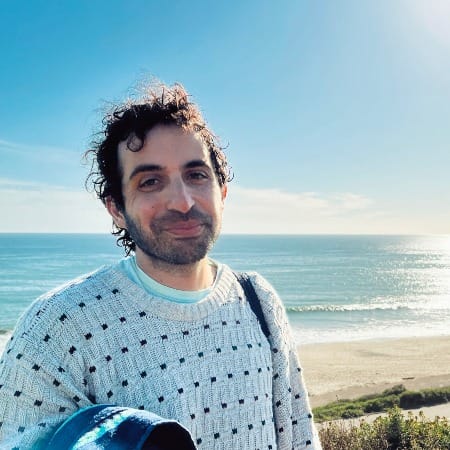What is Sequencer?
Sequencer is a place to decode our world with stories about science. It’s a venue for readers who care about pressing scientific questions and appreciate the weird, exciting, rage-inducing, spine-tingling, mind-bending, or even hilarious phenomena around us. It’s a platform for perennially curious journalists who don’t take themselves too seriously. It’s an invitation to discover alongside us.
We – Dan, Kim, Maddie, and Max – are not just the writers and editors, we’re also the founders and owners. We’re established science journalists and alumni of The Daily Beast, Scientific American, WIRED, Quanta, Smithsonian, C&EN, and more. We’re also all former scientists. Sequencer is our experiment.
Like any good experiment, Sequencer exists atop a heavily researched, rigorously tested, science-backed hypothesis: Traditional science media is broken, so it’s time for something new.
This is typically how the sausage gets made in our industry: A scientist, usually someone who works at one of a handful of American or European universities, publishes their new work in a prestigious journal. Their well-funded institution’s PR team crafts a press release, puts the work under embargo, and emails it to journalists on their press list.
When it works, this model earns many important labs their 15 minutes of fame; millions of people learn about a breakthrough. But when it's the governing model of science journalism, it constrains any content to bounds that are sterile and homogenous. There’s little room for analysis and perspective about the work that goes into doing science, let alone criticism or any reckoning with the future. At a time where climate change is laying waste to the planet and a historic pandemic trudges on and on, science journalism is too-often blank-faced and credulous.
That’s all assuming the model works. More and more, we’re realizing that it doesn’t. Bedrock science publications are dying. Or rather, they’re being actively killed by layoffs, predatory venture capital firms, and mega-conglomerates that keep inexplicably pivoting to video. It would be funny if it weren’t so bleak.
As journalists, doing nothing in this moment felt tantamount to endorsing a dysfunctional status quo. Despite the state of our industry, we’re chronic optimists who are convinced that there are other models for quality science journalism—one that serves writers and readers better.
Sequencer is our idea of an alternative.
We have seen the industry from the inside (we wrote its articles!) All of us are former staffers of the late great Massive Science – where we wrote with voice and perspective and were rewarded with hundreds of thousands of readers. We are not beholden to the traditions or received wisdom of legacy outlets. Most of all, we know that readers demand more from science journalism.
Sequencer is subscriber-supported. That means we are cutting out the middleman and going directly to the reader. We depend on your money to power us, and your feedback to shape our coverage. Do you like our stories? Are we missing something? What do normal people want to see in a science publication? Tell us! Email us at hello@sequencermag.com
We’re choosing $7/month because if you live in a major American city, $7 is the price of a latte. We deserve a latte, don’t you think?
The Team

Maddie Bender
Maddie is a science, health, and technology journalist. She has worked in print, digital, audio, and video media. Some reporting highlights include covering spotted lanternfly fetish content, brain-breaking pseudoscience, and metaverse fitness. She lives in Honolulu, HI, and deeply misses her cat (not dead, just in New York.)
Email Maddie

Dan Samorodnitsky
Dan is a science journalist based in Minneapolis, MN. He’ll write about anything but specializes in biology, genetics, health, and the history of science. He has also written about Dairy Queens, church fish fries, and local politics. He has a cat, Masha, who will definitely appear in newsletters and posts.
Email Dan

Shi En Kim
Kim is a Malaysian-born, DC-based journalist whose writing spans the scientific gamut (please don’t make her pick a favorite beat). Outside of science writing, she dabbles in art, plans for backpacking trips faster she can go on them, and plots the next move against her imposter syndrome in a never-ending tussle.
Email Kim

Max G. Levy
Max is a science journalist whose favorite work tells the human stories behind discoveries in public health, climate change and tech. Max’s work appears in news outlets, magazines, and science videos on YouTube. He’s got sand in his hair as he writes this from his home in Los Angeles. If he goes a couple weeks without mentioning his late pet rats (R.I.P. Fiona, Syd, and Mouse) please call for help.
Email Max

